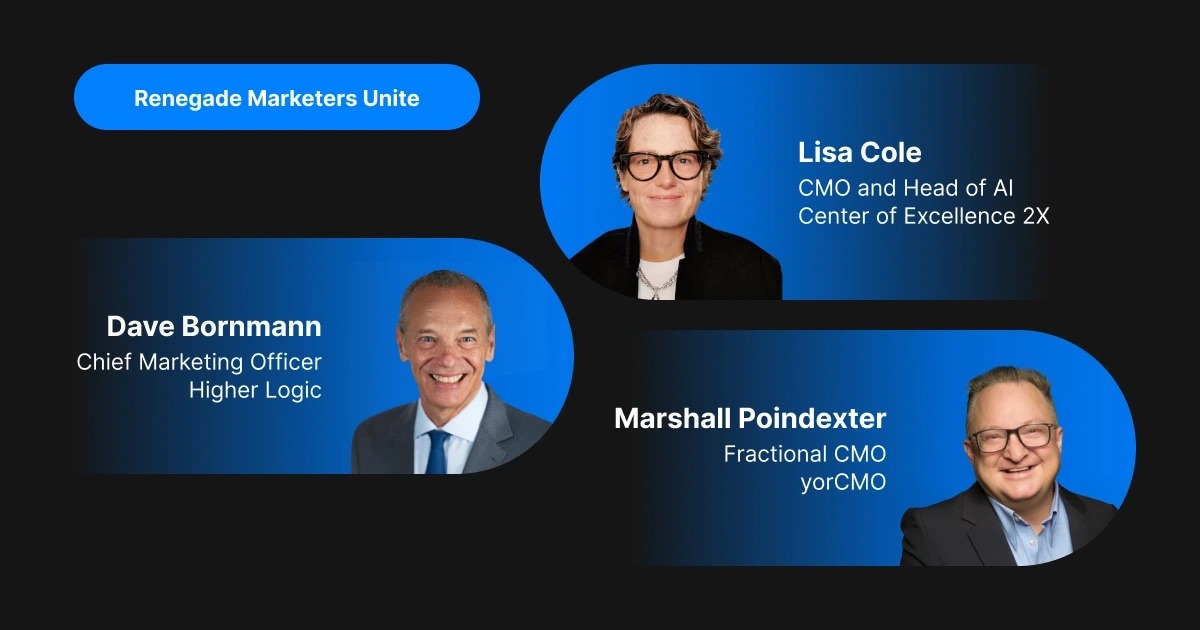January 25, 2021 | Blog
Create more value from these 5 critical B2B marketing strategies

From SEO to ABM, B2B marketing leaders have many powerful tools they can leverage to create more value for the business. But all too often, budget and resource constraints mean they aren’t able to use them—and if they are, it’s not to their full potential.
A marketing-as-a-service (MaaS) operating model can change that.
Here’s our take on how five critical B2B marketing strategies can be improved, and what you can do to achieve significantly greater impact.
Problem #1 – Account-based marketing (ABM) programs tend to fall short of their goals because of marketing and sales misalignment.
What to do instead
Align, align, align. ABM programs perform best when marketing and sales work together to activate targeted high-value accounts and continue engaging with them to create brand advocates.
The core nugget of ABM is about identifying the highest priority accounts for your brand and strategically engaging with these key decision-makers so they become customers. But the purchase is only the middle part of the buyer’s journey; a successful ABM program continues even after the initial purchase to continue building brand loyalty and brand advocates.
How to start
To achieve this requires a concerted effort from both marketing and sales. As a whole, it’s about building thoughtful ways that marketing and sales are connected to activate a set of companies for your brand. On the marketing side, much of the work involves research, data analytics, campaign optimization, prospect targeting, and lead scoring.
On the sales side, it’s about reaching out and communicating with high-value prospects to build relationships and keep the conversation going. This is where the marketing and sales tag team work well together to blow prospects away with personalized messaging and collateral (think one-to-one microsites) that address and solve their unique pain points and needs.
Because it’s as much a marketing campaign as it’s a sales campaign, the success metrics should be unified: How many people from this list engaged with your brand? How much sales value resulted from that engagement? How many of them referred your brand to other people? These are some of the ways to measure the impact of your ABM program in activating that segment of best-fit accounts.
Problem #2 – Demand generation campaigns are too focused on effectiveness without growing an equally important metric: efficiency.
What to do instead
Re-think your metrics. Effectiveness metrics show that your demand generation efforts are on the right track and producing its intended results, but efficiency metrics ensure the sustainability and scalability of your demand gen program.
Scaling a demand gen program is not about delivering more leads. Doubling the number of names that enter your database does not qualify as success if you end up with a skyrocketing cost-per-lead and dismal ROI.
The next step in growing the maturity of demand gen programs is optimizing the efficiency metrics so that you’re able to deliver more highly qualified leads without significantly more cost and effort.
How to start
By testing and optimizing advertising campaigns, landing pages, email subject lines, and the website experience (to name a few), you can improve cost-effectiveness and lead quality. Once you’re able to maintain the same or increased volume of leads at a lower cost, you can reinvest the savings into increasing the lead conversion rate so now you get triple the impact at the same or lower cost.
While many start off with optimizing for effectiveness (like increasing lead volume), optimizing for efficiency is what gets you ready to scale and maximize the impact of your demand gen programs.
Problem #3 – Revenue operations doesn’t exist there because sales and marketing are disconnected, siloed, and working off different data and metrics.
What to do instead
Move toward unifying sales and marketing so they can align their strategies and work efficiently towards increasing revenue.
Most marketing organizations don’t have accurate sales and marketing impact reporting, a.k.a. revenue operations. As a result of this disconnect between the two functions, it’s difficult to track the impact that marketing has on revenue.
Revenue operations enables you to see how marketing campaign results are generated from the first touch point all the way through to revenue. It provides a better understanding of how different marketing initiatives impact sales metrics like velocity, value, size, speed, and win rate of deals.
How to start
By creating visibility into sales and marketing data and applying analytics to it, marketing leaders can translate this data into business insights that show how marketing contributes to revenue and pipeline. With the power of data-driven insights on your side, marketing and sales can collaborate effectively towards a single, aligned goal—driving revenue.
This is the shift that needs to happen for marketing to transform from being a sales enabler to a strategic revenue driver.
Take, for example, an SEO program; typically, you can see how a keyword search converts into leads, but it stops there. Beyond that, marketing has no vision into how their leads performed once they become opportunities and how many become closed-wins. However, with revenue operations, you can see how a keyword search converts into leads and how it moves through the pipeline to result in revenue, and you can better plan your strategy around it.
Problem #4 – Content analytics is overlooked because most writers and businesses don’t know what impact their content produces.
What to do instead
Integrate content operations with data analytics to help track the marketing impact of content and enables the content team to identify and leverage successful content to further drive revenue.
What most B2B content marketers overlook is that taking your content creation cues from data—rather than guesswork—helps you create high-impact content that resonates with your prospects wherever they may be in the customer journey. Moreover, you can save time, money, and effort by atomizing high-performing pillar content into smaller, focused pieces for distribution in different marketing channels.
How to start
Ideally, content operations should work closely with the data team to gain insight on how many clicks, leads, social shares, and traffic each content piece produced. Knowing what’s working, what’s not, and more importantly, why—Was the positioning wrong? Was the topic out of touch with the target audience?—create all kinds of questions and thought processes that the content team would never have considered, had they not seen the data.
Since content is one of the gears that keep the marketing engine running, creating purposeful content based on a data-driven strategy will amplify the impact of demand generation initiatives.
Problem #5 – Search engine optimization (SEO) is solely focused on ranking higher in search engines.
What to do instead
Re-evaluate your priorities. Higher rankings and higher web traffic make up the first half of the SEO equation; the second half is about converting relevant web traffic to leads and demand.
SEO strategies shouldn’t stop at just achieving higher rankings and higher web traffic—
those are just the interim goals. Measure the success of our SEO program based on how much pipeline impact it creates from search engines.
How to create greater value
To do that, optimize the website experience to boost the engagement value and move your prospects towards the conversion goal: getting someone who is an anonymous visitor to want to become a known visitor and complete an action on the page like downloading content, registering for a demo, or requesting for more information.
Most websites see a 99-98% drop-off rate because there is no clear user flow or next step for prospects to continue engaging with your brand and potentially convert to a lead. Simply increasing that 1-2% conversion rate to 4-5% by tweaking the conversion journey more than triples the amount of leads you get, even on flat web traffic. Imagine the impact with tripled or quadrupled web traffic.
So, ranking higher and increasing web traffic are important goals but the most valuable goal of an SEO strategy that shouldn’t be overlooked is increasing the conversion rate and as a result, your company’s revenue.
Leverage B2B Marketing as a Service (MaaS) to Scale Revenue Impact
MaaS has enabled forward-thinking B2B marketing leaders to adopt a global operating model and reimagine their marketing mix for critical strategies like the five mentioned above. Learn more about how MaaS works, the real-world results achieved by early adopters and how to build a winning business case for MaaS in The Definitive Guide to Marketing as a Service.
Founded in 2017 by three former CMOs, 2X is a dedicated B2B MaaS firm that helps CMOs expand revenue impact with specialized expertise in marketing execution, provided by world-class talent at labor rates of 30-50% less than US equivalents.
Want to learn how we can help you create more value from your marketing? Contact us here.



